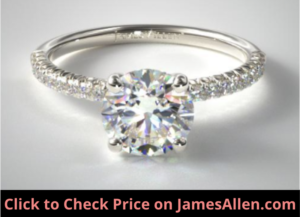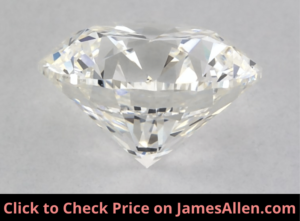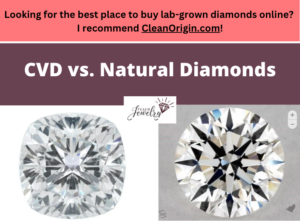
There are many decisions involved in finding the right diamond for your ring. Beyond the four Cs of color, cut, clarity, and color, you’ll also consider whether to choose a natural or lab-grown diamond.
As you’ve searched for a diamond, you’ve likely come across Carbon Vapor Deposition (CVD) diamonds.
The main difference between CVD and natural diamonds is that CVD diamonds are lab-grown through a process that combines a diamond seed with carbon and hydrogen. Natural diamonds form under the earth and are considered more valuable than diamonds produced in a lab.
We’ll compare CVD versus natural diamonds, including an overview of each, five differences, and how to decide between them.
What is a CVD Diamond?
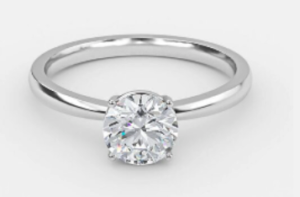
Producing a diamond through CVD uses a newer technology compared to the other popular method of creating lab-grown diamonds, high-pressure, high-temperature (HPHT).
Carbon-rich gasses are deposited on the diamond seed, and the result is a square-shaped diamond crystal. The manufacturer then cuts the crystal into the final shape, whether that’s a round-, princess-, or emerald-cut diamond.
HPHT is meant to imitate the conditions where natural diamonds develop. The seed is placed into carbon and then exposed to intense heat and pressure.
Once the carbon is melted, a diamond emerges around it. It’s cooled, and the cutter polishes and sets it into the jewelry.
To the naked eye, it’s impossible to tell the difference between CVD and natural diamonds.
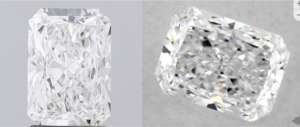
Even trained gemologists need special equipment to do so.
One of the pros of lab-grown diamonds is they have the same physical and chemical properties as natural ones. A CVD diamond can have inclusions, a poor cut, or strong brilliance.
That’s why you should approach choosing a CVD and natural diamond in the same way.
What is a Natural Diamond?
A natural diamond, also called an earth-grown diamond, is one that developed underground and was extracted through mining operations.
When carbon deposits are subjected to high amounts of heat and pressure, they crystalize. The process can take several months or millions of years.
It often occurs close to 100 miles below the surface. In many cases, it’s believed volcanic eruptions pushed them to the surface.
Natural diamonds are the hardest substance on Earth. They earn a 10 on the Mohs Scale of Hardness, ranking above gemstones such as quartz, topaz and calcite.
Generally, they’re value is based on size, color, and clarity. A heavy diamond without visible inclusions or color is valuable because most are small, included, and show color.
Natural diamonds are placed in all types of jewelry, from diamond rings and necklaces to bracelets and earrings. They’ve served as a luxury accessory for centuries and as a sign of wealth and prosperity.
How are CVD and Natural Diamonds Different?
Comparing CVD versus natural diamonds involves understanding how they differ across their development, value, and overall appeal.
You should understand these details before deciding whether to choose an earth-mined or synthetic diamond.
Here are the differences and what you should know about each.
1. CVD Diamonds are Less Expensive
CVD diamonds cost less than natural diamonds for several reasons.
The first is because of lower demand. Most buyers want an authentic diamond mined from the earth, as opposed to one produced in a lab. So natural diamonds command a higher price.
The supply chain for CVD diamonds is also shorter, so there’s less markup. For many vendors who sell natural diamonds, it exchanges hands multiple times along the way.
This increases the price for the final buyer.
The process of mining diamonds is also more expensive compared to growing one in a lab.
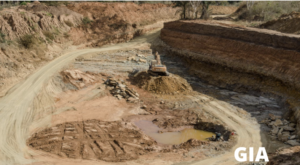
CVD diamonds can be mass-produced, which lowers their cost.
To show the difference in price between CVD and natural diamonds, we assessed prices for each.
This CVD diamond earned the following grades:
- Carat weight: 1.01
- Cut: Excellent
- Color: E
- Clarity: VS1
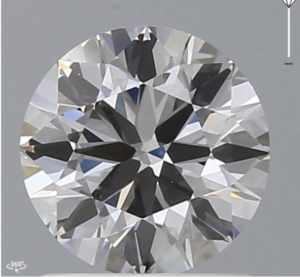
It’s priced at $2,202.
This natural diamond earned the same grades but sells for $6,390.
That’s almost three times the price for a natural diamond versus one created through CVD.
This difference is true across comparisons of all natural and lab-grown diamonds. You’ll generally save 40-60 percent by choosing the latter.
2. Natural Diamonds Retain More Value
Natural diamonds retain more value compared to CVD diamonds because they’re one-of-a-kind and more rare. CVD diamonds can be mass-produced.
That being said, we don’t recommend purchasing a diamond with the expectation of selling it later for a higher price. The only instances where this might be possible is if it’s large and without color or inclusions.
But in most cases, natural diamonds hold about half their value after they leave the store.
For example, imagine you bought this earth-mined diamond for its sale price of $19,530.
It weighs 1.50 carats, has an F color grade, an ideal cut, and is internally flawless.
It’s a high-quality diamond.
But if you bought it with the expectation a jeweler would pay more than that in 10 years, it’ll likely lead to disappointment. You’d be fortunate to find a buyer willing to pay $10,000 for it.
If you’re trying to sell a CVD diamond back to a jeweler, you likely won’t get half of what you paid for it.
There’s little incentive for the jeweler to buy it from you when they could find a comparable one from a supplier with the same qualities.
If you opt to sell to an individual on an online marketplace, you’ll settle for fractions of what you paid.
That’s why we recommend purchasing a CVD diamond with the intent it won’t change hands again.
3. CVD Diamonds are Considered More Socially Conscious
CVD diamonds are often branded as more socially conscious than ones mined from the earth.
The diamond industry earned a negative reputation because of allegations of exploitative labor practices in countries where they’re mined.
In many of these regions, diamonds are the primary source of economic opportunity, but suppliers are accused of unfair practices that ultimately harm the workers.
Additionally, the money made from diamonds has been used to finance civil wars in these countries.
In recent years, leaders in the industry have taken steps to become more socially conscious.
For example, most major jewelers in the United States abide by the Kimberley Process, which provides guidelines around ensuring their diamonds aren’t being used to destabilize legitimate governments.
Companies like Brilliant Earth have also built their brand through shining a spotlight on these issues.

CVD diamonds avoid these negative social impacts by scraping the mining process altogether.
They’re produced in high-tech labs around the world, which don’t require ties to a specific location where natural diamonds are found.
4. Natural Diamonds are More Popular for Engagement Rings
The vast majority of engagement rings feature natural diamonds.
They’ve been used for thousands of years in jewelry, but CVD diamonds are a relatively new offering.
Even though the naked eye can’t tell the difference, most buyers want the feeling of a unique, natural stone on their ring.
In fact, industry estimates say only 5 percent of diamonds sold are lab-created.
This is evidenced by the selection of natural versus lab-grown diamonds you’ll find at popular vendors.
For example, James Allen has more than 235,000 natural, round-cut diamonds in its inventory.
For lab-created diamonds, this number is less than 50,000.
But lab-created diamonds have seen growth in recent years.
Blue Nile previously only sold natural diamonds but has now partnered with Lightbox to sell synthetic earrings, necklaces, and bracelets.
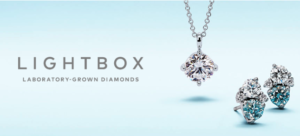
So although it’s uncommon for engagement rings to include CVD diamonds, it may not be as unusual in the coming years as buyers learn more about their advantages.
Consumers are more open to CVD and HPHT diamonds for everyday jewelry, as opposed to engagement rings. When it comes to the most important occasions, they’re willing to spend more for a natural diamond.
5. CVD Diamonds Require High Amounts of Energy to Produce
CVD diamonds are often viewed as environmentally friendly. In many ways, this is true.
The process of mining diamonds from the earth can cause many types of environmental degradation, from soil erosion to disrupting wildlife habitats.
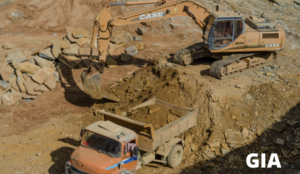
This is another area where the industry has sought to improve its reputation.
But although CVD diamonds avoid these specific issues, they do require extensive amounts of energy. The machines heat to extreme temperatures, drawing from the local power grids.
In many countries where CVD diamonds are produced, they rely on coal and other nonrenewable energy sources for power.
The production of diamonds in a lab draws on these resources.
A Trucost report found the greenhouse gas emissions from creating lab-grown diamonds was three times greater compared to ones mined from the ground.
This demonstrates how although there are environmental benefits of CVD versus natural diamonds, it does come with downsides in this area.
Should You Choose a CVD or Natural Diamond?
Choosing between a CVD and natural diamond requires understanding how their origin impacts the overall performance.
Both can serve as the centerpiece of a diamond ring and look identical, but there are several characteristics to note as you select one or the other.
Here are some tips to help you decide.
You should choose a CVD diamond if:
- You’re interested in saving 40-60 percent compared to a natural diamond
- It’s environmentally- and socially-conscious production process is appealing to you
- You aren’t concerned about aligning with engagement ring tradition with an earth-mined diamond
Opt for a natural diamond if:
- You want the pride of knowing your diamond has a natural origin and is one of a kind
- You’re willing to pay a significantly higher price compared to a CVD diamond
- You want a wider selection of diamonds to choose from when you visit the most popular retailers
View CVD and natural diamonds, and pair them with a variety of settings to find the right combination.
By assessing the differences between CVD and natural diamonds, you’ll discover the right choice for you.

Jacob Clarke
Jacob Clarke is the founder of TeachJewelry.com.
He earned an Applied Jewelry Professional Diploma from the Gemological Institute of America (GIA) and now brings you essential information about diamonds, settings, and more.
Jacob has consulted with leading jewelry brands, and his work has been cited in Clean Origin, Diamond Nexus and industry publications.
He's also a member of the International Gem Society.
He enjoys discussing jewelry with readers, so contact him with any questions at jacob.clarke@teachjewelry.com.

